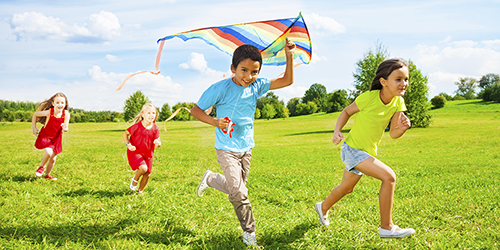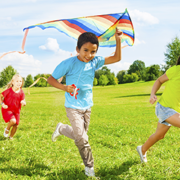Fourteen elementary schools participate in physical literacy research
 Fourteen West Vancouver elementary schools have participated in a two-year longitudinal research project on physical literacy, using Sport for Life’s PLAY Tools. This work will provide the baseline for follow-up studies.
Fourteen West Vancouver elementary schools have participated in a two-year longitudinal research project on physical literacy, using Sport for Life’s PLAY Tools. This work will provide the baseline for follow-up studies.
The research — published in June and authored by Yiling Tang, Beatrix Algurén, Chelsea Pelletier, Patti-Jean Naylor and Guy Faulkner — followed up on a recent review and meta-analysis that found “a fifth of young people across 23 countries do not meet any of the recommendations and only 10.3% of children meet the recommended 24-hour movement guidelines for all three behaviours worldwide.”
The study aimed to describe a sample of Canadian children’s baseline levels of physical literacy and movement behaviours and explore the association between their mental well-being and moderate-to-vigorous physical activity (MVPA).
Tracking children’s daily movement habits
When the study began, grade two students were given wrist-worn accelerometers for seven days, and their physical literacy was assessed. Parents completed a questionnaire about their child’s wellbeing.
“Although most of our sample was physically active and showed higher adherence to 24-hour movement guidelines than comparable population data, the motor competence and self-perceived physical literacy of our sample were similar to those of previous studies,” wrote the authors.
“Physical literacy has an independent association with children’s internalizing problems and total difficulties. Ongoing assessment will investigate the relationships between physical literacy and children’s mental health from a longitudinal perspective.”
Of the 355 students involved, not all wore the accelerometer for an appropriate amount of time, and not all provided usable data. Regardless, some of their findings include:
- Boys accumulated more average daily steps than girls.
- 43.2% of the participants met all three 24-hour movement guidelines.
- 48.9% accumulated at least 60 minutes of MVPA daily.
- On average, children spent 457.8 min/day, 2.1 hours/day, and 9.8 hours/day on total sedentary behaviour, recreational screen use, and sleep, respectively.
- Boys and girls accumulated more minutes of MVPA during school days than on weekends.
“Physical competence together with self-perceived competence have been shown to influence the maintenance of children’s physical activity participation. It will be informative to monitor the change in the relationship between physical competence and perceived physical literacy, and how their associations with MVPA change among children over time,” reads the report.
Making waves with PL4C
To accumulate data, the researchers used the PLAY Tools invented by Dr. Dean Kriellaars – specifically PLAYself and PLAYfun. The former is a questionnaire based on the child’s perception, while the latter involves a trained professional using a scoresheet to gauge their level of physical literacy. The participants’ parents were also asked to fill out a questionnaire.
The researchers selected this school district because it participates in the Physical Literacy for Communities initiative, which aims to positively impact students through multi-sector partnership tables that support the delivery of school physical literacy programming. This has previously led to West Vancouver making headlines for incorporating physical literacy into its curriculum, the creation of a daycare designed with movement in mind, and introduction of a new digital library for educators called PLAYBuilder.
There are three stages to the Physical Literacy for Communities process—educate, train and sustain. An initiative of the Public Health Agency of Canada (PHAC), the project is designed to support the development of physical literacy in 150,000 children and youth aged 2-18 across Canada.
The long-term impact of keeping students physically engaged
A particularly interesting focus for the senior author of the study, Guy Faulkner, concerns the inter-relationships between physical activity, physical literacy and mental health.
“One of the intriguing suggestions of our findings is that physical literacy is independently associated with better mental health irrespective of how physically active you are,” he said, noting that future assessments will continue to examine these relationships.
According to Sport for Life’s Senior Director of Physical Literacy Drew Mitchell, this research paper and others like it will give physical literacy practitioners the foundation they need to make lasting changes in Canada and beyond. He believes it will help demonstrate the positive effects physical activity has on students’ focus, self-esteem, fitness levels and physical and mental health – which could convince policy-makers, school leaders and parents to support physical literacy programming.
“We’ve already seen such exciting work being done in the West Vancouver School District as part of the PL4C program, and the impact that has on students. This research paper continues to solidify our understanding of why it’s so important that we keep children physically engaged both during school hours and at home,” he said.
“I’m looking forward to hearing more about their findings, and what they mean for the Canadian school system, as we look towards the future of education in this country.”
Ways to support physical literacy development in your community’s schools
Looking to support physical literacy development in your region? Consider the following takeaways from the research in West Vancouver:
- Incorporate comprehensive observation of physical literacy: Use tools such as the Physical Literacy Observation for Youth (PLAY) to observe various aspects of physical literacy, including self-perceived competence and fundamental movement skills. This provides a comprehensive understanding of children’s physical literacy levels.
- Promote observation of self-perceived physical literacy: Recognize the importance of children’s self-perceptions of their physical literacy. Encourage interventions and programs that enhance children’s self-efficacy for physical activity participation. Emphasize the positive aspects of physical literacy and provide opportunities for children to develop confidence in their abilities.
- Consider the association between physical literacy and mental health: Recognize the link between physical literacy and mental health outcomes in children. Explore the associations between physical literacy, physical activity, and psychosocial well-being. Consider interventions that promote both physical and mental well-being.
- Consider multiple measurement tools: Use observation tools and measures to comprehensively view physical literacy, physical activity, and mental health. Incorporate objective measures, such as accelerometers, and subjective measures, such as questionnaires, to obtain a more holistic understanding.
Note that these recommendations may only encompass part of the scope of potential recommendations. Consider your community, available observation tools (like the PLAY Tools!), and goals when working with other organizations to promote physical literacy.
To read the full research article, click here.

